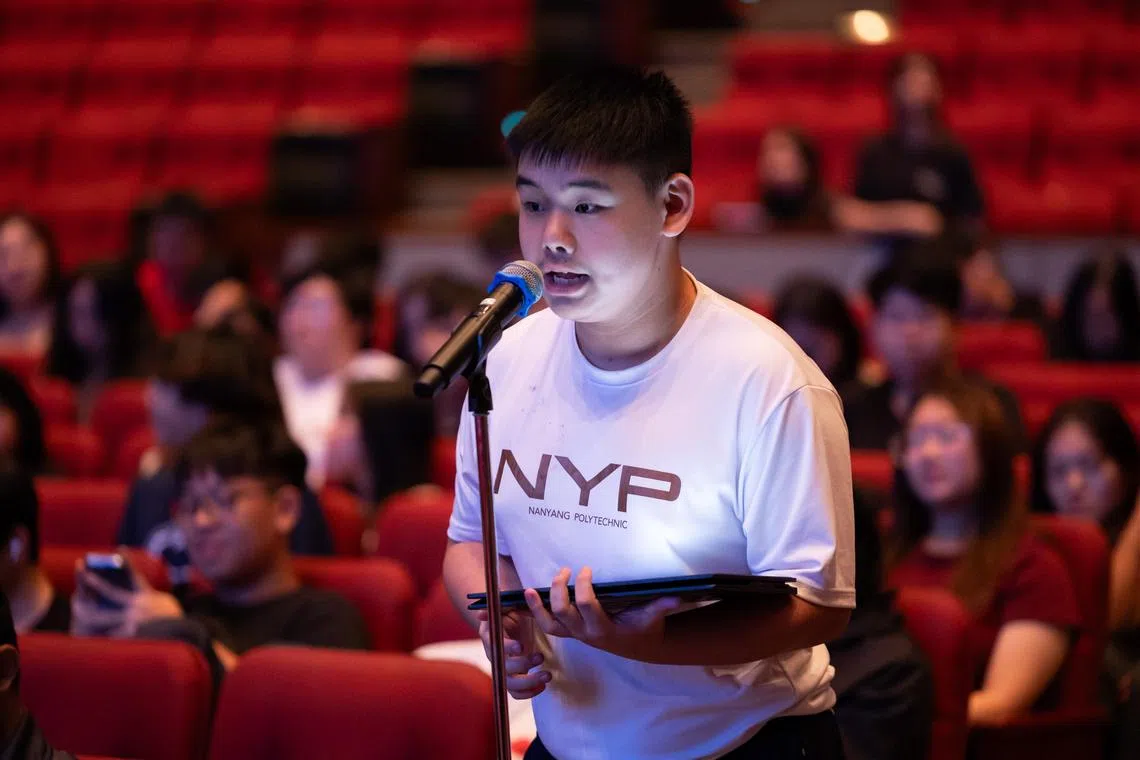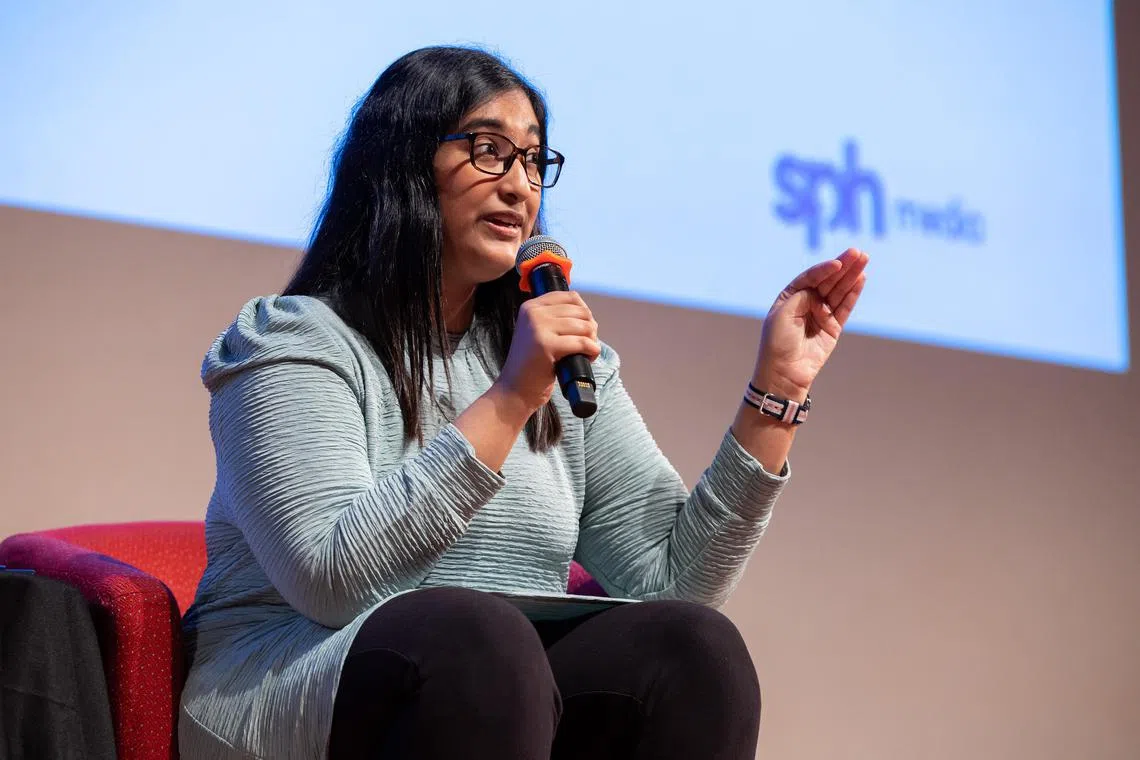NYP students learn about what it takes to be an environment journalist from ST reporter
Sign up now: Get ST's newsletters delivered to your inbox

NYP student Chow Zhenyu (above) at the outreach talk by Environment and Science Journalist Shabana Begum on July 3.
ST PHOTO: BRIAN TEO
Follow topic:
SINGAPORE – What would you do if you were the Minister for Sustainability and the Environment?
The question was among those posed by Nanyang Polytechnic (NYP) students to Straits Times environment and science reporter Shabana Begum at an outreach talk on July 3.
At the session, attended by around 350 Polytechnic Foundation Programme students from multiple diplomas, Ms Shabana shared her experience as an environment journalist in Singapore, the pathways to becoming a reporter, and the rewarding and challenging aspects of her job.
Answering the aforementioned question by 17-year-old Chow Zhenyu, an animation, games and visual effects student, Ms Shabana said she “would want to reduce greenhouse emissions, adapt to climate change impacts and find creative ways to grow food to improve Singapore’s food security”.
She also mentioned how she would encourage more people to recycle to improve the country’s domestic recycling rate, which reached 12 per cent in 2023.
Ms Shabana, who has spent four years covering the science and environment beat, also stressed the importance of accuracy in her job when replying to mass media management student Kernice Teo, 17, who asked how accuracy can be ensured while reporting quickly.
“Accuracy and fact-checking is to be prioritised over speed. In the fundamentals and the ABCs of journalism, it’s the most important thing. If you don’t get it right, it affects your credibility as a journalist,” Ms Shabana said.
During the session, she also touched on different types of follow-up stories that resulted from the recent oil spill at Pasir Panjang Terminal. Some students let out audible gasps when she showed a photo of an oil-soaked bird from the incident as she highlighted stories that covered the spill’s impact on biodiversity.
Beyond covering the environment in Singapore, Ms Shabana has also reported from overseas, such as when she covered then Prime Minister Lee Hsien Loong’s visit to the United Arab Emirates in October 2023. “It required a lot of stamina as it was over two packed days – I had to write my stories while travelling from place to place in a car.”
She also showed a video clip of her visit to a nuclear plant in Switzerland, where she learnt more about the country’s nuclear energy policies as a case study.

The Straits Times Environment and Science Journalist Shabana Begum Nazeer sharing with students about her work, at Nanyang Polytechnic, on July 3.
ST PHOTO: BRIAN TEO
The students were polled on whether Singapore should have nuclear power as an energy source in the future, and on the type of environment stories that young people like to read.
To the first question, most students thought that nuclear power would be a key way to reach net-zero carbon emissions in the future. Students also indicated that they would click on stories about environmental disasters the most, and the majority of students said they preferred consuming news through social media, compared with written, illustrated or video formats.
Mass media management student Raye Seah, 17, said the event made him more encouraged to pursue journalism.
“I felt enlightened after the session. When it first started and the crowd was asked who wanted to become reporters, I only meekly put my hand up – I was quite afraid because I didn’t know much about journalism. Now, I’m more educated about it, and I feel like this talk will be applicable for me in the future.”

